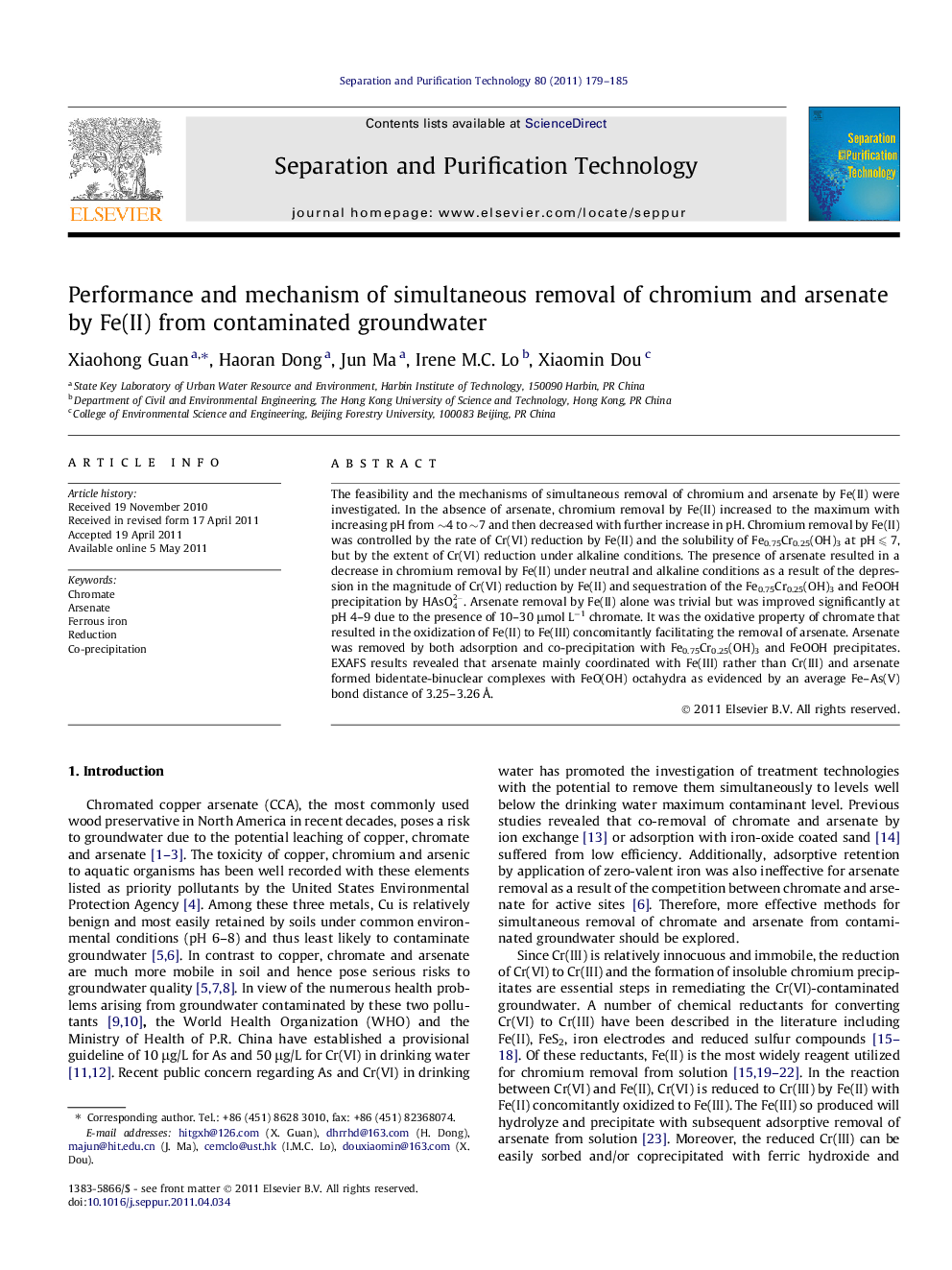| Article ID | Journal | Published Year | Pages | File Type |
|---|---|---|---|---|
| 642589 | Separation and Purification Technology | 2011 | 7 Pages |
The feasibility and the mechanisms of simultaneous removal of chromium and arsenate by Fe(II) were investigated. In the absence of arsenate, chromium removal by Fe(II) increased to the maximum with increasing pH from ∼4 to ∼7 and then decreased with further increase in pH. Chromium removal by Fe(II) was controlled by the rate of Cr(VI) reduction by Fe(II) and the solubility of Fe0.75Cr0.25(OH)3 at pH ≤ 7, but by the extent of Cr(VI) reduction under alkaline conditions. The presence of arsenate resulted in a decrease in chromium removal by Fe(II) under neutral and alkaline conditions as a result of the depression in the magnitude of Cr(VI) reduction by Fe(II) and sequestration of the Fe0.75Cr0.25(OH)3 and FeOOH precipitation by HAsO42-. Arsenate removal by Fe(II) alone was trivial but was improved significantly at pH 4–9 due to the presence of 10–30 μmol L−1 chromate. It was the oxidative property of chromate that resulted in the oxidization of Fe(II) to Fe(III) concomitantly facilitating the removal of arsenate. Arsenate was removed by both adsorption and co-precipitation with Fe0.75Cr0.25(OH)3 and FeOOH precipitates. EXAFS results revealed that arsenate mainly coordinated with Fe(III) rather than Cr(III) and arsenate formed bidentate-binuclear complexes with FeO(OH) octahydra as evidenced by an average Fe–As(V) bond distance of 3.25–3.26 Å.
Graphical abstractFigure optionsDownload full-size imageDownload as PowerPoint slideHighlights► The presence of Cr(VI) significantly improved As(V) removal by Fe(II). ► The presence of As(V) resulted in a decrease in Cr removal by Fe(II) at pH ≥ 7. ► Fe(II) is effective for simultaneous removal of chromium and arsenate at pH ∼ 6. ► Arsenate mainly coordinated with Fe(III) rather than Cr(III). ► Arsenate formed bidentate-binuclear complexes with FeO(OH) octahydra.
